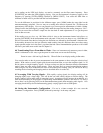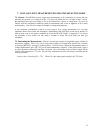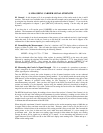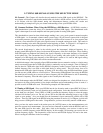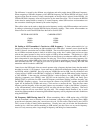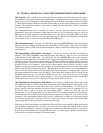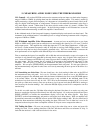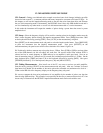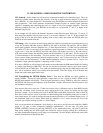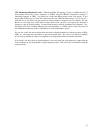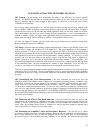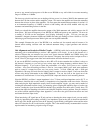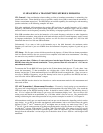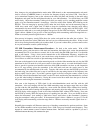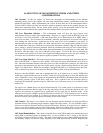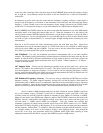22
13. MEASURING AUDIO HARMONIC DISTORTION
13.1 General – In this chapter we will show how to measure harmonics of a sinusoidal signal. This is an
extremely valuable feature removing the necessity of having an audio distortion analyzer if you already
have a HP3586. In a later chapter we’ll demonstrate using the HP3586 to measure harmonic distortion at
radio frequencies. This audio harmonic measurement example requires an external signal generator
capable of outputting and controlling the level of a signal of very low harmonic distortion. From the
following example you’ll see, your HP3586 can be used as a very powerful 2
nd
and 3
rd
or higher order
harmonic analysis tool.
As an example we will analyze the harmonic distortion of the 600 ohm input, 20db gain, 2.5 watt at 75
ohm output line amplifier that we used to test IC’s for noise in chapters 11 and 12. In this example I’m
going to skip at lot of the detail button pushing used to enter values and control our HP3586 since you
should by now be familiar with this.
13.2 Setup – First we connect an audio signal generator capable of providing and controlling the level of
a very low distortion 600 ohm signal at 1000Hz to the input of the audio line amplifier, like my HP205
audio signal generator. Since the amplifier has a 75 ohm output and needs a 75 ohm resistive termination
we connect a 75 ohm 5 watt resistor to the amplifiers output and ground as a dummy load. We don’t want
to put a over .5 watts into our HP3585 and really only need to put around 1 mw into it. We add around a
4.7K ohm resistor between the amplifiers output and the instrument’s 75 ohm input. We also turn on the
75 ohm termination in the instrument. This now provides close to a 75 ohm load for our amplifier and
forms a power divider potentiometer network composed of the 5 watt 75 ohm load resistor, the 4.7K ohm
series resistor and the instrument’s 75 ohm internal termination resistor to present close to 1 mw to our
instrument’s input when the amplifier is outputting its full 2.5 watts.
If we have a HP3586 A or B we simply activate the carrier mode under the SSB channel modes for looking
at a single signal through a 20Hz filter. We can also use the low distortion selective level mode on the C
version and activate its 20Hz filter. You could use 10db measuring range but the 100db range would still
give .1db of resolution, which is most likely more than needed. Place the display level in the dbm unit
output and set the range upper limit in auto.
13.3 Normalizing the HP3586 Display Level – Tune both the HP3586 and signal generator to
exactly 1000Hz. Turn up the signal generator’s output until you see a signal of around –20dbm on the
HP3586 measurement level display. Tune the signal generator to exactly 1000Hz by using the counter in
the HP3586 and observing the frequency of the instrument’s display and then turn off the counter to lock
the instruments frequency.
Now measure the power across the 75 ohm load resistor using a calibrated scope or diode RMS rectifier
probe and volt meter slowly increase the amps output power in the resistor by turning up the signal
generator’s output. If you see the power level on the HP3586 exceed 0dbm, increase the value of the 4.7K
ohm series resistor to have as near as possible to a 0dbm reading with the amplifier putting out its rated 2.5
watts output power. We want to measure the amps harmonic distortion at it’s maximum output power. If
the instrument’ input level is below 0dbm when the amplifier is at 2.5 watts, decrease the size of the
resistor to get a display reading of within +/- 10db of 0dbm.
Now we can normalize the instrument’s level display to only refer to levels below the amplifiers 1000Hz
output of 2.5 watts to make comparative harmonic measurements. On the entry sub panel press
[RDNG→OFFSET] followed by pressing [OFFSET] on the measurement entry sub panel to place the
amps power reading into the offset register and activate the offset to display readings db’s referenced to
our amps fundamental frequency power input to our instrument. Now the display should read exactly 0db
with the O annunciator on behind the dbm.



